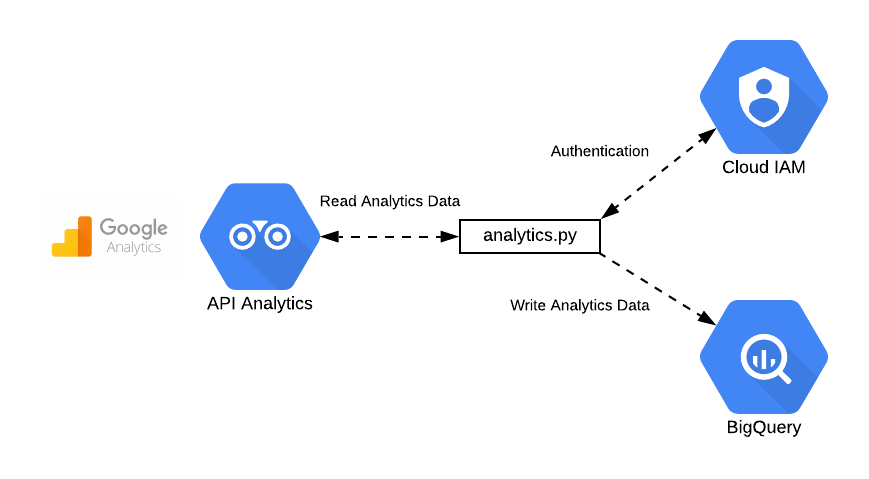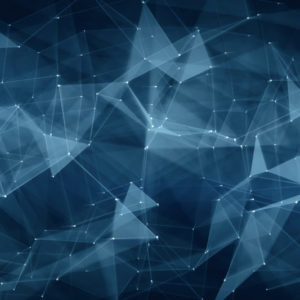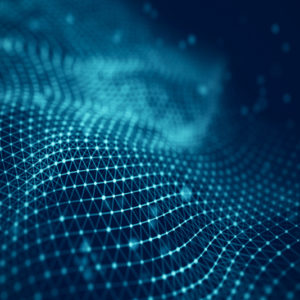
The development of software delivery has never been independent of its ability to maximize software delivery efficiency through building, testing, and deploying high-quality software. DevOps has been on the leading edge of that change in the last ten years as developers and operations teams have come together to accelerate their release cycles, minimize siloes, and improve collaboration.
Nevertheless, engineers continue to struggle with mundane work, disintegrated tools, and firefighting. Introduce AI agents, intelligent co-workers that do more than help by automating complex tasks, reasoning between workflows, and making true autonomous DevOps possible.
The Surge of AI Adoption in DevOps
AI is no longer optional; it’s central to the future of DevOps. According to MarketAnalysis.com, the AI in DevOps market was worth $24.9 billion by 2033, and is projected to grow to $24.9 billion by 2033, at a compound annual growth rate (CAGR) of 24%. Another estimate from Market Analysis indicates faster, earlier growth, with a projected annual CAGR of 31.2% through 2028, taking the market from $1.1 billion (2023) to $4.3 billion.
Organizations implementing AI in DevOps report dramatic results: 30–50% gains in efficiency, up to 40% reduction in post-deployment defects, and downtime cut by as much as 45% with predictive analytics.
In the Indian IT sector, home to global tech services giants like TCS, Infosys, and Wipro, a recent EY India survey forecasts productivity gains of 43–45% over five years due to generative AI adoption, especially in software development, where gains may reach 60%.
How AI Agents Will Transform DevOps Workflows for Engineers
When you are building an AI-ready infrastructure, there are different components that you need to create in different environments. Now, it is very difficult to standardize them all so that they work like Lego blocks to build your AI infrastructure. It is here where Terraform, when mixed with AWS, creates the real magic. Why? Because if you are not using Terraform, you will have a nightmare doing the following things;
1. Enhancing Developer Productivity and Workflow Experience
Developer productivity is at the heart of DevOps, and AI agents deliver tangible acceleration. A controlled GitHub Copilot study demonstrated that developers completed tasks 55.8% faster when working alongside AI pair programming assistance.
At the macro level, mature DevOps organizations report deployment frequencies increasing by up to 50% or more year-over-year, thanks to AI in automated testing and CI/CD optimizations; in fact, 70% of leading teams now use AI tools for testing or development.
2. AI-Powered Monitoring, Alerting & Incident Resolution
AI agents excel in triaging incidents, reducing noise, speeding detection, and minimizing errors. AIOps platforms deliver results like 15–20% improvements in mean-time-to-detect (MTTD), up to 45% reduction in mean-time-to-repair (MTTR), and incident volume drops above 50%.
Dynatrace’s AI engine “Davis” demonstrates how causal AI can automatically root-cause issues in complex microservice-covered infrastructures, closing the feedback loop without constant human oversight.
3. Incident Management and Troubleshooting
Traditional CI/CD pipelines run sequentially through build, test, and deploy stages. AI agents augment these processes by:
- Predicting likely failures or flaky tests and proactively rerouting.
- Suggesting optimizations like test reordering, parallelization, or canary deployment.
- Auto-healing failed runs by retrying or rolling back based on patterns.
In experimental studies and industry reports, organizations using intelligent pipelines saw 40% fewer deployment failures, shorter release cycles, and faster time to recovery.
4. Agentic Automation for Infrastructure and IaC
AI agents now comprehend Infrastructure-as-Code (IaC) files and can generate, validate, and refine them autonomously. They build Terraform scripts, manage Kubernetes resources, enforce compliance, and adapt over time.
According to industry trend reports, approximately 33% of enterprises used AI-driven anomaly detection and automated root cause analysis in 2024, with predictive capacity tools reducing downtime by 28% and improving MTTR by 31%.
Agentic frameworks such as LLM-As-DevOps (LADs) are capable of multi-step reasoning: planning, provisioning, testing, deploying, monitoring, and refining systems without manual orchestration. These agents are becoming tools capable of learning from scale and outcomes, becoming increasingly autonomous over time.
5. Security, Compliance & DevSecOps via AI Agents
In situations where software teams and data science teams work in isolated departments, ML models usually do not make it to production. The gaps are filled by AI agents addressing ML models as the first-class artifact to be governed by CI/CD, namely, version control, testing, containerization, drift detection, and automatic redeployment. It is this integrated software supply chain that enables improved work together, control, and expedited deployment.
Mixed-method research proves that the deployment of ML DevOps is highly effective as it increases the frequency of model deployment, decreases the number of errors, and advances the work of cross-functional teamwork and conformity.
6. Unifying DevOps with MLOps via AI Agents
In situations where software teams and data science teams work in isolated departments, ML models usually do not make it to production. The gaps are filled by AI agents addressing ML models as the first-class artifact to be governed by CI/CD, namely, version control, testing, containerization, drift detection, and automatic redeployment. It is this integrated software supply chain that enables improved work together, control, and expedited deployment.
Mixed-method research proves that the deployment of ML DevOps is highly effective as it increases the frequency of model deployment, decreases the number of errors, and advances the work of cross-functional teamwork and conformity.
Key Challenges and Governance Considerations
While AI agents offer transformative promise, they also raise issues of trust, governance, and skill adoption:
Trust & explainability: Executives cite a lack of trust as a top barrier to adoption of agentic AI, fearing hallucinations or incorrect decisions.
Skill gaps: Organizations must invest in prompt engineering, model configuration, and observability setup. CIOs report talent shortages in DevOps and cloud automation skills in 2023–2024.
Integration complexity: Legacy infrastructures and fragmented toolchains (average of 12 tools) hinder seamless AI-agent integration in many enterprises.
To mitigate risks, organizations must enforce human‑in‑the‑loop mechanisms, action logs, explainable outputs, and clear escalation policies.
How Engineers Can Begin: A Practical Roadmap
Taking AI agents in DevOps is not a race. To bring their workflows to the modern world of AI in the realm of engineering and DevOps management, the development will start with minor experiments and then grow to a complete use of intelligent agents orchestration. This is a hands-on guide that engineers need in order to join in, grow, and become the face of AI-powered DevOps.
1. Start Small
The simplest method of adding AI agents to your workflow is simply finding areas of pain that automated systems can add value to instantly, without a substantial restructuring. One way engineers can start is by empowering the AI-driven code review agents in the integrated development environments (IDEs).
The tools can help with the suggestions, identification of bugs in real-time, and compliance with the coding standards, relieving developers of some time spent checking code, and leaving time to concentrate on more difficult issues. Early AI pair programmer tools include GitHub Copilot and Amazon CodeWhisperer, which are already built into well-known IDEs like VSCode and JetBrains.
2. Scale Mid-Term
When initial use cases are successful, teams can proceed to mid-range AI integrations that provide greater strategic benefit. At this point, attention must be paid to the use of AI to enhance testing, deployment, and security.
For e.g., you may present AI-powered test case construction systems that process recent code commitments and create test cases in the form of unit or integration tests. This increases test coverage and reduces the amount of manual test writing. Another way, these tools also minimize regression errors where continuous validation is done over the builds.
3. Mature Strategy
The next stage of machine intelligence involves full coordination of AI agent ecosystems, which can be implemented by relatively mature organizations that have developed experience and infrastructure. These ecosystems operate collectively across borders- DevOps, MLOps, SecOp, and FinOps- to provide cross-functional autonomous operational insight.
Consider a situation whereby, one AI agent predicts the capacity of the servers according to its previous data peaks, another lays out deployments according to when traffic peaks will be happening and yet another agent is working to make sure that the regulatory policies are being adhered to, all this, collaborating with each other, and with very slight human input.
Such agents are not intended to supplant human engineers; they complement them because they carry the overhead of complex operations so that human engineers can concentrate on architecture and innovation as well as strategy.
How Engineers Will Lead the AI-Powered DevOps Revolution?
The DevOps landscape is undergoing a fundamental shift, from engineers being scriptwriters automating workflows line-by-line, to becoming orchestrators who guide intelligent agents through high-level strategy and contextual intent. This evolution is not merely a change in tooling; it’s a transformation in how engineers think, operate, and contribute to software delivery.
In the new paradigm, AI agents are capable of understanding objectives, executing tasks independently, and learning from feedback. These agents can integrate with DevOps platforms, communicate with APIs, and make real-time decisions based on dynamic inputs. Engineers are no longer required to micromanage every command; instead, they define the broader operational framework in which agents function.
This includes setting:
- Escalation logic: When should an agent request human approval?
- Behavioral constraints: What tasks should be off-limits?
- Optimization goals: Should speed be prioritized over cost or reliability?
By abstracting away much of the low-level operational logic, engineers can focus on big-picture architecture, how systems interact, how resilience is maintained, and how user experiences are optimized. They become curators of ecosystems rather than custodians of scripts.
Conclusion
AI agents have moved from vision to reality, driving unprecedented productivity, reliability, and cost savings in DevOps workflows. With adoption rates soaring, yields of 30–60%+ efficiency gains, and market trajectories growing toward tens of billions, the mandate is clear: embrace agentic DevOps or risk falling behind.
For engineers, the opportunity is massive to shift from manual toil to strategic orchestration. With strong governance, skilled enablement, and phased rollout, AI agents will unlock a new software delivery era, and engineers who lead this transition will define the future of cloud-native, AI-enhanced software delivery.
Contact us or Visit us for a closer look at how VE3’s AI solutions & DevOps solutions can drive your organization’s success. Let’s shape the future together.








